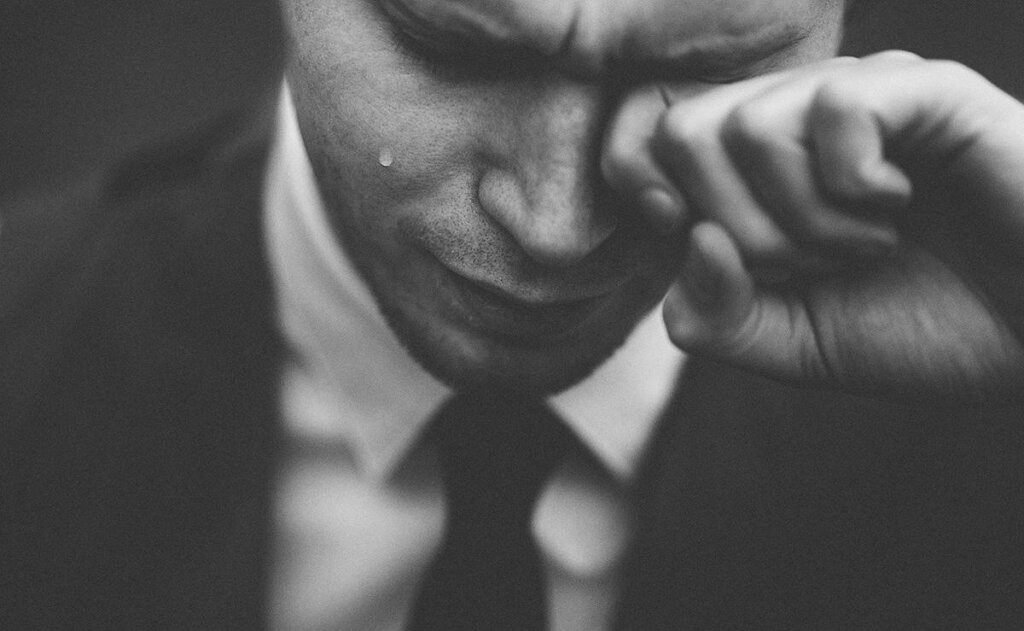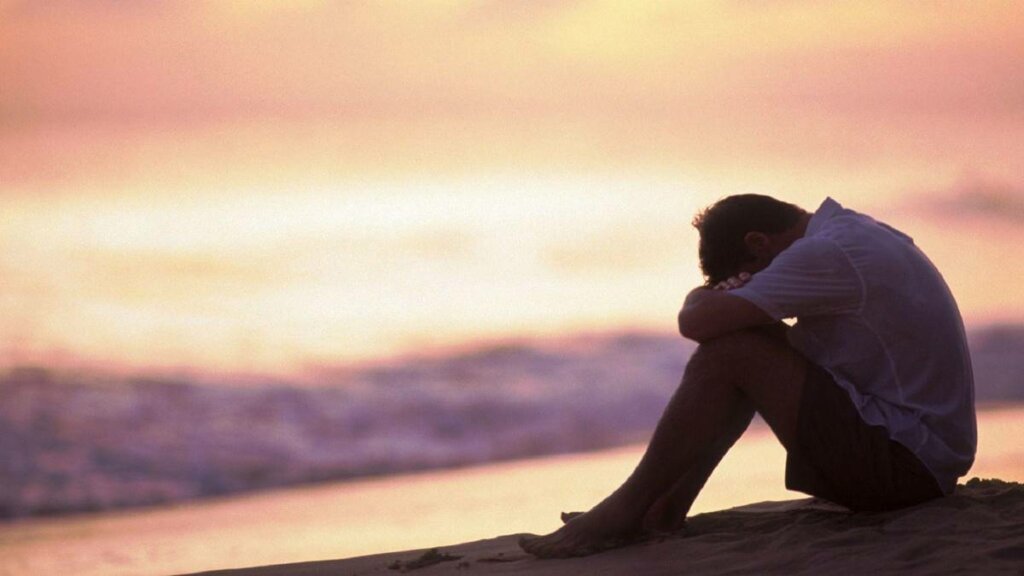Why Crying in Public Should Be Normalized


Written and verified by the psychologist Valeria Sabater
Have you ever cried in public, in front of acquaintances or complete strangers? If so, you probably still remember it extremely clearly, as it probably won’t have been a pleasant situation. Indeed, as a rule, expressing our deepest emotions in front of others is an uncomfortable experience that often embarrasses us.
However, it seems to be perfectly acceptable in some situations. For example, athletes often cry with joy, frustration, or sadness without being judged or criticized by the general public. On the other hand, if someone bursts into tears in the middle of a work meeting, they’re most likely labeled as ‘weak’. They also might be thought to be suffering from mental health issues.
Someone who cries isn’t always going through a depression or anxiety disorder. Crying is human. It’s necessary and cathartic. It’s a natural act, like eating, sleeping, and breathing. Despite this, we continue to be told that these kinds of expressions should be reserved for the private sphere.

The stigma of crying in public
Crying is an exocrine act. It’s a physiological process in which a series of substances leave our body. The same thing happens when we exhale or sweat. It’s a basic act necessary for our homeostasis and human well-being. Despite this, as natural as it may be, we’re still uncomfortable when we see others crying in public.
Despite the unwritten social mandates that tell us that this type of demonstration must take place in the private sphere, there’s an interesting aspect that’s often overlooked. It’s the fact that the act of crying also has an evolutionary response. This is to awaken empathy and prosocial behavior in us. In other words, we must assist those who need help or comfort.
Perhaps, in the past, this act was fulfilled. Nevertheless, in the present, seeing someone cry creates discomfort because not everyone knows how to act – or wants to. Nowadays, we live in an individualistic world where everyone has to solve their own problems. In private, we can let go of our sorrows and ordeals but, in the face of others, we must show resolution, containment, and security.
As a rule, those who cry publicly are seen as less capable and decisive. In addition, the belief persists that those who express their feelings need to be reassured.
Holding back tears to appear competent (especially if you’re a man)
Crying in public is a stigma, Even more so if you’re a man. The University of Tilburg conducted research that confirmed this fact. They reaffirmed that people often feel like they want to offer help to those who are crying, but it’s an ambivalent feeling.
The study also claimed that when people cry in public, we tend to see them as less competent. We perceive them as warmer and more emotional but, should we need to carry out an important task, it’s extremely possible that we wouldn’t consider them. This situation is especially pronounced in the male gender.
Consequently, men who occasionally cry publicly are seen as ineffective and incompetent in their work responsibilities.
Crying in public continues to be misunderstood
When a person bursts into tears in front of others, the same reaction almost always occurs. They’re told to ‘calm down’. It’s as if they’re considered to be out of their mind. As if they’ve suffered an error in their internal programming and need to be rebooted, like the computers we work on every day.
Nevertheless, the crying person doesn’t need to calm down. They need to vent their emotions. However, they’re told to contain themselves and are taken to a room where they can secretly recover. Tears are interpreted as a danger, as an indicator that all balance, calm, and reason have been lost, and that stability must be regained.
This means that when someone’s ‘broken’, they may well end up feeling ashamed. Moreover, they might even end up thinking that there’s something wrong with them for not knowing how to contain themselves and that their behavior is inappropriate.
Crying isn’t an act of weakness or a reaction that should be regretted. The error isn’t in ourselves, but in those who continue to interpret crying as an expression of instability that defines people who don’t know how to deal with their problems.

The need to update our beliefs about emotional crying
The vast majority of people are empathic and seeing someone cry makes us feel uncomfortable. This is the case because we want everyone to be okay and for those around us to be happy, calm, and in harmony.
However, our social narratives have injected us with extremely biased ideas about crying. Ideas that should all be demolished.
Tears are a social lubricant
Tears are a powerful social lubricant that invites group communication. We must bear this in mind. When we see someone who breaks down and starts crying, we shouldn’t tell them to calm down. In fact, if that’s the only thing we can think of saying we should keep quiet.
The most appropriate, cathartic, and useful things we can do is to facilitate communication and emotional expression. Letting the person express what they feel and what’s happening to them is always more appropriate behavior. We’re not obliged to solve their problems for them but starting an empathetic dialogue, without making any judgments, is the most humane, simple, and beneficial strategy we can employ.
Crying doesn’t make us weak, it shows we’re genuine
People spend half their lives masking their suffering. We leave home with our masks on and when someone asks us how we are, we say great. It doesn’t matter that our life is falling apart, the important thing is to appear normal and show false happiness.
However, there are those who can’t or don’t know how to lie and, when they feel broken, they cry. Doing so isn’t an act of weakness, but of authenticity even though we might feel ashamed and afraid of being judged. On the other hand, if the act of crying in public was normalized, we’d have a better understanding of human nature and how beneficial crying can be.
Perhaps this would make us more altruistic with each other, and even understand that we’re all the same and we all deal with the same problems and worries. After all, strong people aren’t those who endure the most, they’re those who accept what they feel, express it, and look for ways to solve what hurts.
All cited sources were thoroughly reviewed by our team to ensure their quality, reliability, currency, and validity. The bibliography of this article was considered reliable and of academic or scientific accuracy.
- Feinberg M, Willer R, Keltner D. Flustered and faithful: embarrassment as a signal of prosociality. J Pers Soc Psychol. 2012 Jan;102(1):81-97. doi: 10.1037/a0025403. Epub 2011 Sep 19. PMID: 21928915.
- van de Ven, Niels & Meijs, Maartje & Vingerhoets, Ad. (2016). What emotional tears convey: Tearful individuals are seen as warmer, but also as less competent. The British journal of social psychology. 56. 10.1111/bjso.12162.
- Provine RR, Krosnowski KA, Brocato NW. Tearing: Breakthrough in Human Emotional Signaling. Evolutionary Psychology. January 2009. doi:10.1177/147470490900700107
This text is provided for informational purposes only and does not replace consultation with a professional. If in doubt, consult your specialist.








